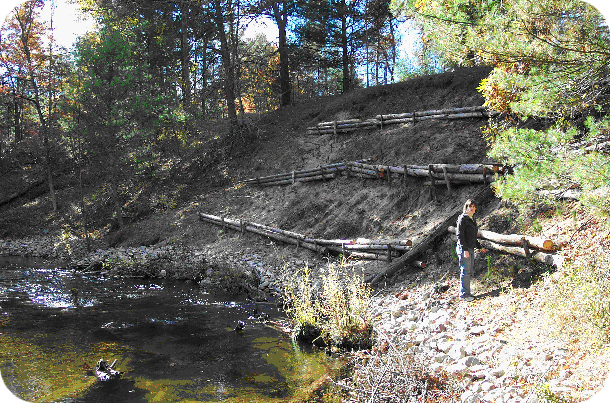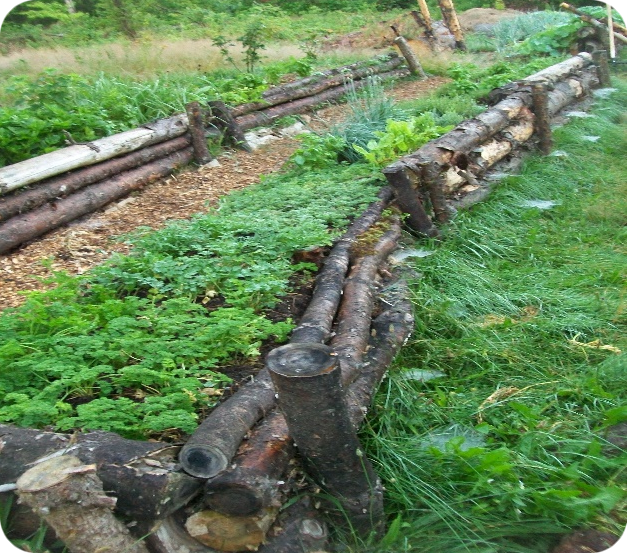Application: Bridges, canals, drainage, dykes, embankments, roads, footpaths, wastewater treatment plants
Description: The log terracing technique uses alternating terraced logs staked in along steep slopes to stop surface erosion on eroding slopes, which is critical for successful revegetation efforts. Trees and shrubs are planted behind them. Log terracing shortens the slope length and gradient between each structure, providing stable planting areas throughout most of the slope face. It is a way to intercept water running down a slope along the contour, and bedding logs or coir logs in shallow trenches. Contour logs reduce water velocity, break up concentrated flows, and induce hydraulic roughness to burned watersheds. Log terracing should be effective for a period of one to three years, providing short-term protection on slopes where permanent vegetation will be established to provide long-term erosion control. It is better to use coir logs made locally than to fell trees.
Contribution to climate resilience: By reducing the velocity of water running down the slope and breaking up concentrated flows, log terracing reduces erosion. Because it can be developed using local labour and locally available materials, it can be applied in a quicker timeframe than traditional civil engineering works. If designed and constructed carefully, log terracing can be valuable in preparing for likely changes in climate.
Supplementary sources of information:
http://www.nrcs.usda.gov/wps/portal/nrcs/detail/wy/technical/?cid=nrcs142p2_027265
http://www.tahoebmp.org/Documents/BMPHandbook/Chapter%204/4.2/e_Terrac.pdf
http://www.blm.gov/or/programs/nrst/files/Soil%20bioeng.pdf
http://www.wsdot.wa.gov/publications/manuals/fulltext/M25-30/740.pdf
https://peaceofearthfarmalbany.wordpress.com/page/9/
This resilience-building measure is sourced from the Water Resource Adaptation Guide (2019) published by the National Council for Sustainable Development at the Ministry of Environment in Cambodia. The full Guide is available to download at URL https://ncsd.moe.gov.kh/sites/default/files/2019-10/Water%20Resources%20Adaptation%20Guide_March%202019_En.pdf


